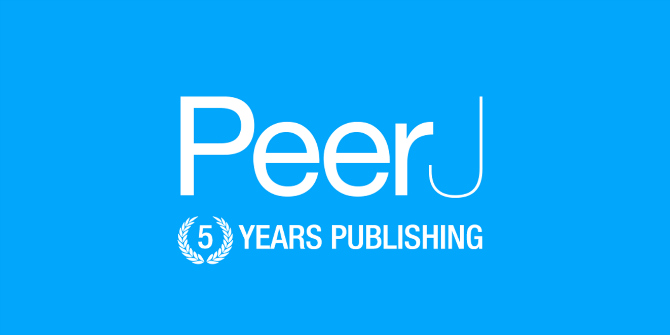Responding to Daniel Hook’s post, The Open Tide – How openness in research and communication is becoming the default setting, Daniel Spichtinger argues that there remains much work to be done in order for open research practices to become the “new normal”. Highlighting unresolved issues around learned societies and the globalisation of open research policies, he suggests that rather than floating passively on a rising tide, building a truly open research system will require continued innovation particularly at the level of policy development and implementation.
In a recent LSE Impact blog post Daniel Hook put forward that “openness in research and communication is becoming the default setting”. Similarly, the 2019 European Research and Innovation days, organised by the European Commission, contained a session on “open science as the new normal”. So, can open science advocates relax, lean back and enjoy a beverage of their choice?
I believe that declaring victory is premature. Yes, progress has been made and the number and market size of open access (OA) publications is increasing. Piwowar et al calculate that currently 31% of all journal articles are available as OA and 52% of article views are to OA articles. Given existing trends, they estimate that by 2025 44% of all journal articles will be available and OA 70% of article views will be to OA articles. However, these are sobering figures, given the high policy expectations of realising 100% open access, as for instance Plan S does.
Thus, while a number of research policy makers and funders actively promote an open science world, many stakeholders, including senior academics, still regard open access to scientific publications with suspicion, and do not even consider talking about other components of open science, such as open research data, or improvements to research evaluation systems. A 2019 survey by the European University Association (EUA), consisting of 260 valid responses from universities in 32 European countries, concludes that open science practices are still considered of low importance for most universities when it comes to evaluating researchers.Resistance is often clad in a language that acknowledges the theoretical merits of open science, but then presents operational reasons why it – unfortunately – cannot be implemented.For instance, the European Molecular Biology Organisation (EMBO), recently claimed that it cannot switch to open access because the resulting APCs would be too high and thus unaffordable for researchers who want to publish in these journals. This is based on a narrow view that the APC model is the only strategy to provide open access. However, a recent report outlined 27 business models and strategies to transition to open access.
While some learned societies are actively working on changing their business models along these lines (as constructively discussed at least year’s “1st Basel Sustainable Publishing Forum”) the incentives for them to change practices that have worked well for them in the past are weak. This was notable recently, when a number of learned societies wrote directly to President Trump to lobby against more stringent open access policies.
But focusing only on the US and the UK, as Hook does, also overlooks the geopolitical complexities involved in making a globally interconnected scientific system more open. The fact that India will – contrary to earlier announcements – not join plan S, is a case in point, and the plan is also facing challenges in other parts of the world, in some cases because it is perceived as imposing a model developed in the global North, although many different routes towards implementing plan S have been outlined.
There have also been critics within Europe itself, who argue that the European Union is naively giving up its research results for others to use. In truth, the United States and other Western economies have very similar rules in place as regards open access to publicly funded scientific publications and research data. While China is not on the same level yet, it has publicly committed to supporting open access, although it has not formally joined plan S. The recent positive discussion of open science at the UN will hopefully encourage a global process of how to best change the scientific system towards more openness together. However, at the moment such global coordination is in its infancy.
In addition to and sometimes combined with geopolitical arguments and regional skepticism, active attempts to discredit open access as “bad science” are never far from the surface, e.g. the insinuation that open access publications may not be properly peer reviewed or that the APC model inevitably leads to lots of publications with questionable merit.
Rather than glibly assuming that we are moving in the right direction, we must therefore realise that continued commitment by all relevant actors, and policy makers in particular, remains essential to effect the switch to an open access and untimely open science system. In fact, Daniel Hook’s blog post does provide evidence for this by comparing and contrasting the more interventionist approach of the UK and the more hands-off approach of the US, noting that Open Access benefits from clear policy frameworks and a focus on their implementation.
The Open Working Blog reports that the Executive Board of the European Open Science Cloud, Karel Luyben, estimates at least 10 or 15 years of travel until we reach a point where Open Science is simply absorbed into ordinary, everyday science. Given the fact that the open access movement started in the early 2000s the scientific system has sometimes been described as a super tanker: even if course corrections are being made, it takes a long time until the vessel turns. What we need in advancing open access is a continued focus on developing open frameworks and embedding them into research practices and this requires cooperation between all stakeholders.
What does this mean for the European Union? As a new Commission takes power it will be important that the legacy of the previous Commissioner for Research and Innovation, Carlos Moedas, who promoted open science, open innovation and open to the world as the pillars of EU research policy, is continued and hopefully even expanded by his successor Commissioner Gabriel. A coherent EU Open Science Strategy, which takes the form of a binding Directive or Regulation building on the current soft law Recommendation on Access to and Preservation of Scientific Information, would be a welcome step change to ensure EU Member States implement Open Science practices in a coherent manner. This should also contain specific support actions that actively help and support learned societies, small and medium sized publishers and journals to transition from closed to open access.
Note: This article gives the views of the authors, and not the position of the LSE Impact Blog, nor of the London School of Economics. Please review our comments policy if you have any concerns on posting a comment below.
Featured Image Credit: Diplomas, by Marcel Schoenhardt via Flickr (CC BY-SA 2.0)









Another perceptive article on where we might be going is available over at Bloomberg, aptly entitled ” Scholarly Publishers Are Happy to Give Stuff Away If Someone Pays Them” https://www.bloomberg.com/opinion/articles/2020-01-16/berlin-academic-publishing-conference-shows-shift-in-open-access